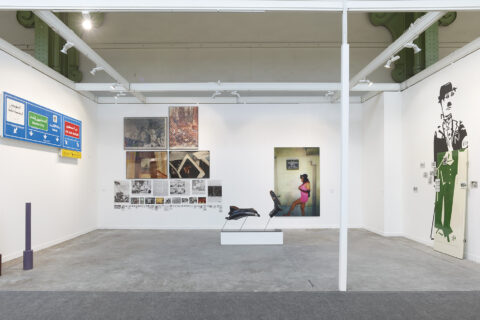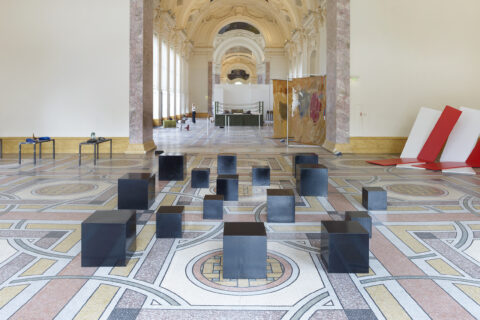FIAC 2019 FIAC 2019
17/10/2019 – 20/10/2019
fiac!
17 – 20 October, 2019
Galerie Nagel Draxler / Booth C16
& fiac Projecs at Petit Palais
GRAND PALAIS
Avenue Winston Churchill
75008 Paris
fiac! 2019
Galerie Nagel Draxler / Booth C16
Foto: Simon Vogel
fiac! 2019
Galerie Nagel Draxler / Booth C16
Foto: Simon Vogel
Heimo Zobernig
Untitled, 1991
Installation of 16 cardboard cubes
Dimension variable
The historically significant installation Untitled (1991) consists of 16 cardboard cubes of different sizes. Similar to the principle of matryoshka, the cubes gradually increase in size, each format being longer on the sides by approximately 2.5 cm.
From the very beginning, cardboard sculptures have been key works in Zobernig’s œuvre, a reaction to minimal sculpture typical of the 70s and 80s. As opposed to expensive materials and perfectly finished surfaces, he used inexpensive materials such as cardboard and lacquer. The cubes are handmade and are intentionally left with imperfections.
Foto: Simon Vogel
Press Release
Galerie Nagel Draxler / Booth C16
with works by:
Kader Attia, Abdulnasser Gharem, Renée Green, Martin Kippenberger, Martha Rosler, Luke Willis Thompson, Heimo Zobernig
and
FIAC Projects at Petit Palais: Heimo Zobernig


